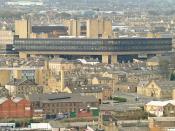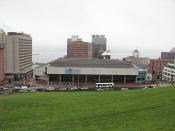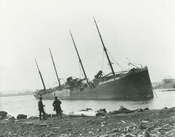On December 6, 1917 the Norwegian vessel SS Imo, carrying Belgian relief supplies, and the French freighter SS Mont Blanc, carrying munitions, collided in Halifax Harbor. The ships' captains had made very wrong assumptions of where they were supposed to go. The two ships were heading almost straight for one another when they both decided to turn westward. By the time they realized that they had made the same move it was too late. The people of Halifax were tremendously affected by the power of the explosion, 1600 people died instantly and over 9000 were injured. There was over $35,000,000.00 dollars damage. There was no way that the town of Halifax could pay for the damages, so there were many donations made by other governments that helped the economy.
Within hours of the explosion, the Halifax Relief Committee, a volunteer organization, was organized. Its duties were sheltering the homeless, identification of the dead and injured, construction of temporary housing and the appraisal of demolished and damaged buildings.
"Richmond" was the area in which the economy was most affected (Bedford Basin, Halifax Harbor, Russell Street, Robie Street and Kempt Road).
Robert S. Low was the general manager for the construction committee. He was able to bring in an army of carpenters, masons, plumbers, electricians and other tradesmen who were ready to begin rebuilding. To assist in reconstruction planning for the devastated area, the Commission asked Mr. Adams - a very well known architect - to also help. Adams was teamed up with a colleague - architect George Ross - of the firm of Ross and Macdonald of Montreal, who offered their services at a bargain rate in February 1918. Their goal was to come up with a building that could withstand any natural force, be non-costly and also...


